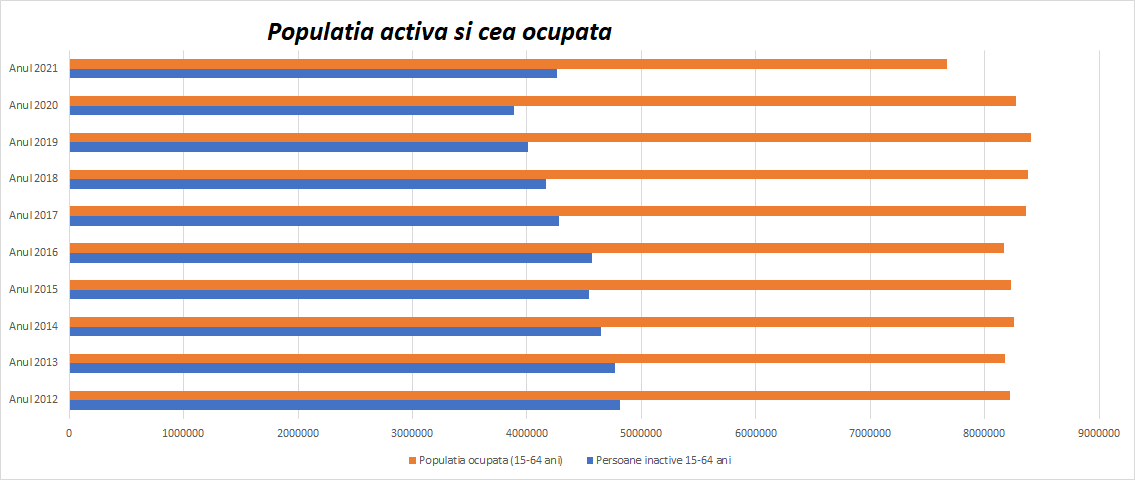
When planning a summer vacation, the Ionescu couple carefully collected their income and vowed to be thrifty so that they could also feel like people on vacation, and not sit with a tight bag
They also had a 25-year-old son who did not work because the salary offered to him seemed unworthy. So he was content with what his mother, father and state gave him. He was doing great with everything he had, why bother with work?
However, the first problems appeared in April. The salary increase that Mr. and Mrs. Ionescu had hoped for turned out to be much lower than they expected, and the expenses turned out to be higher. In order to afford the dream vacation, they refused their son’s scholarship and sent him to work.

Recently, the Government has half-heartedly admitted that it has not completed its tasks well and lacks about 20 billion from the budget. It’s all nothing, as the Minister of Finance said, but what set the Coalition on fire. Like all previous governments, when they drew up their revenue and expenditure plans, they relied on the fact that more money would be collected and less spent. But reality showed them that everything was the opposite – they earned less and spent more. What shall I do?
If we look at the labor market, maybe that’s where the solution might come from.

We have more than 4 million fellow citizens (ages 25-65) inactive on the labor market. In recent years, their number has not changed much, although the population is decreasing. About 7.7 million people work here. Almost a million less than a few years ago.
Fewer and fewer working people pay contributions so that the state pays scholarships to those who do not work. And we are not talking about pensioners, but about people of working age.
Why are these people not working? Some have good reasons related to family responsibilities. A quarter of them were working part-time and were out of contract. Others worked full-time, but the company closed and they couldn’t find work that matched their qualifications.
Less than every second Romanian is employed in the 55-64 age group

Less than one in two 55-64-year-olds in Romania are currently working, and those outside the labor market say 94% do not want to work. The explanation for this situation is undoubtedly the relatively large number of special pensioners, pensioners aged a little over 40, Dumitru believes.
Among the employed, only 53% receive a salary (including workers in the unobservable economy), and of these, only 78% pay taxes and fees, the rest – undeclared wages.
We have too little participation in economic activity, weak incentives to work, we have abuse of special pensions at a very young age
About 25% of employees who pay taxes work in the public sector. So, from these numbers, I would say that it is quite clear that we have a serious problem in the labor market, a structural problem, we participate too little in economic activity, the incentives to work are weak, we have special abuse. pensions at a very young age, people who retire too early, on whose training the state has spent significant resources, which allows them to retire, probably at the peak of their professional life at the age of 45-50, explains the Romanian macroeconomist.
What shall I do? Four pillars
1. Cancellation of special pensions and their recalculation based on the principles of the state accumulation system (pension points), while observing the principle that no pension in payment can and will not be reduced. At the same time, the method of indexation of the pension score will be revised to ensure a constant connection between its value as a basis for calculating the replacement income from labor (pension) and the main remuneration of the factor of labor production, respectively, wages. ;
2. Reforming the institutions of the labor market by returning to an integral system of labor relations based on a collective labor agreement at the national level, simultaneously with the introduction of a partnership mechanism for establishing the minimum wage with the active involvement of social partners;
3. Reform of public service pay by creating a single pay system for all civil servants, as well as for contractors. Solving the problem of accumulating old-age pensions with wages in the public service by establishing certain mechanisms to stimulate active aging, on the one hand (participation in the labor market and beyond the standard retirement age), and on the other hand, to limit the abuse and waste of public resources;
4. Reform of local public administration, especially by uniting UATs, following the principle of their economic and fiscal viability, in order to reduce their use of state budget resources;]
How difficult can it be?
Source: Hot News
Lori Barajas is an accomplished journalist, known for her insightful and thought-provoking writing on economy. She currently works as a writer at 247 news reel. With a passion for understanding the economy, Lori’s writing delves deep into the financial issues that matter most, providing readers with a unique perspective on current events.